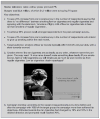What happened to smokers' beliefs about light cigarettes when "light/mild" brand descriptors were banned in the UK? Findings from the International Tobacco Control (ITC) Four Country Survey
- PMID: 18426868
- PMCID: PMC4658347
- DOI: 10.1136/tc.2007.023812
What happened to smokers' beliefs about light cigarettes when "light/mild" brand descriptors were banned in the UK? Findings from the International Tobacco Control (ITC) Four Country Survey
Abstract
Aim: This paper examines how beliefs of smokers in the UK were affected by the removal of "light" and "mild" brand descriptors, which came into effect on 30 September 2003 for Member States of the European Union (EU).
Participants: The data come from the first four waves (2002-2005) of the International Tobacco Control Policy Evaluation (ITC) Four-Country Survey, an annual cohort telephone survey of adult smokers in Canada, USA, UK and Australia (15 450 individual cases).
Design: The UK ban on misleading descriptors occurred around the second wave of data collection in the ITC survey, permitting us to compare beliefs about light cigarettes among adult smokers in the UK before and after the ban, with beliefs in the three other ITC countries unaffected by the ban.
Results: There was a substantial decline in reported beliefs about the benefits of light cigarettes in the UK following the policy change and an associated public information campaign, but by 2005 (ie, wave 4), these beliefs rebounded slightly and the change in beliefs was no greater than in the USA, where there was no policy change.
Conclusions: The findings reveal that high levels of misperceptions about light cigarettes existed among smokers in all four countries before and after the EU ban took effect. We cannot conclude that the policy of removing some aspects of misleading labels has been effective in changing beliefs about light cigarettes. Efforts to correct decades of consumer misperceptions about light cigarettes must extend beyond simply removing "light" and "mild" brand descriptors.
Conflict of interest statement
Figures




References
-
- Pollay RW, Dewhirst T. Risks associated with smoking cigarettes with low machine-measured yields of tar and nicotine. Bethesda, Maryland, USA: National Institutes of Health; 2001. Marketing cigarettes with low machine-measured yields; pp. 199–233.
-
- Kozlowski LT, Goldberg ME, Berwood AY, et al. Smokers’ misperceptions of light and ultra-light cigarettes may keep them smoking. Am J Preventive Med. 1998;15:9–16. - PubMed
Publication types
MeSH terms
Grants and funding
LinkOut - more resources
Full Text Sources
Medical
